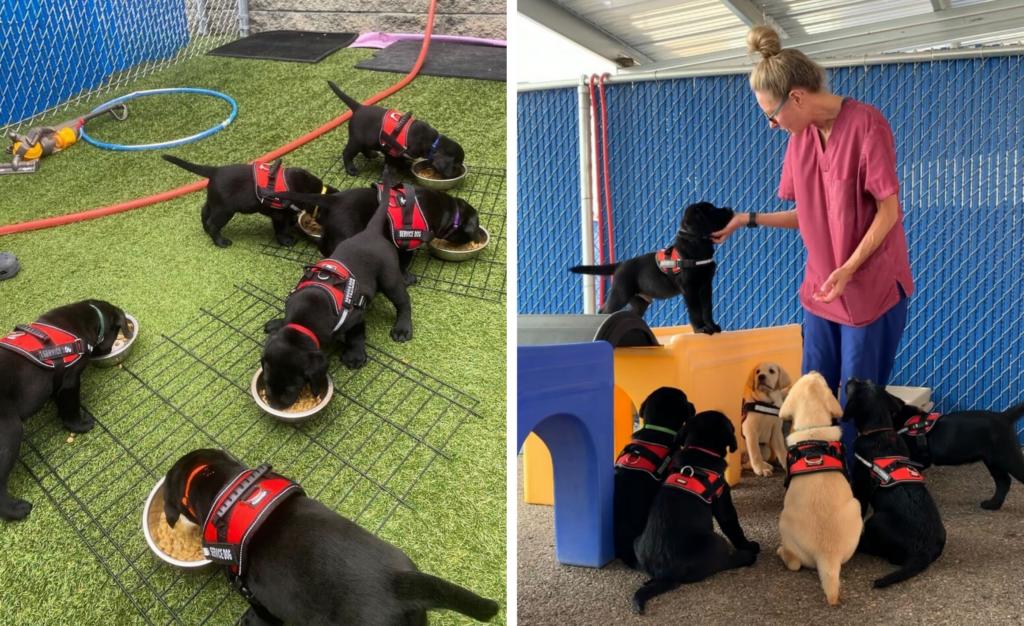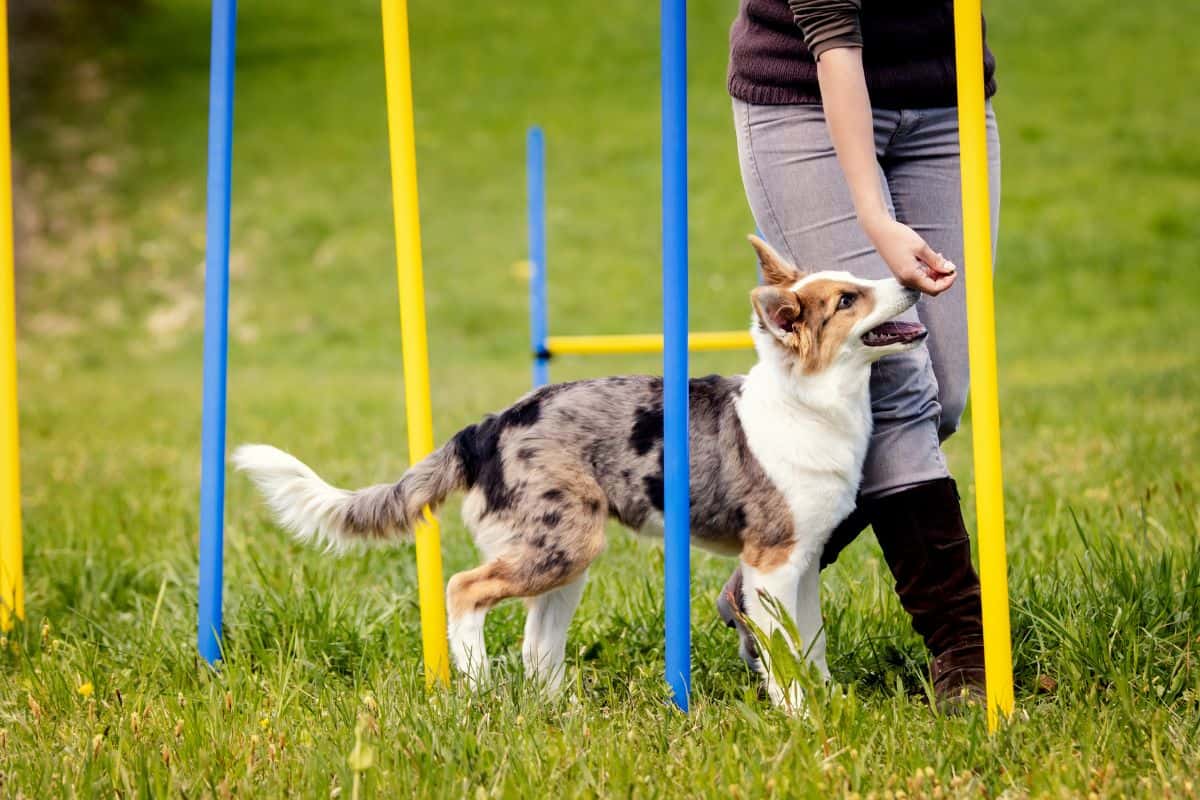Dog Training for First-Time Pet Owners: What You Need to Know
Dog Training for First-Time Pet Owners: What You Need to Know
Blog Article
Beginner's Guide to Effective Canine Training in your home
Effectively educating a canine at home requires a nuanced understanding of canine actions and effective communication approaches. Establishing clear training goals, utilizing high-quality incentives, and maintaining consistency across household participants are critical aspects. In addition, incorporating training into day-to-day routines can improve both engagement and retention. Nonetheless, numerous novice trainers experience obstacles that might prevent development. To navigate these complexities effectively, it's vital to explore several crucial elements that can change your approach and result in a harmonious relationship with your pet. What essential concepts should every newbie understanding to ensure success?
Recognizing Pet Actions
Recognizing pet dog actions is necessary for efficient training and promoting an unified partnership between human beings and their canine friends. Dogs communicate primarily through body language, articulations, and faces, making it essential for proprietors to translate these signals properly. Identifying habits such as tail wagging, grumbling, or cowering can provide insights right into a canine's emotion and intentions.

Common behavior concerns, such as aggressiveness, anxiety, or excessive barking, typically originate from misconceptions or unmet requirements. Observing and attending to these issues quickly can avoid rise and ensure a favorable training experience. By fostering a deep understanding of pet behavior, proprietors can customize their training approaches to match their canine buddies, eventually causing a well-behaved and happy pet.
Important Training Devices
A fully equipped training space can considerably improve the performance of pet dog training at home. Necessary training tools ensure that both the pet dog and the trainer can involve in productive sessions that cultivate understanding and bonding.

Purchasing a tough leash and a comfy, well-fitting collar or harness is vital for safety and control. These tools aid establish limits and make certain the canine stays safe during training. In addition, a marked training location, without diversions, aids concentration for both the pet dog and the trainer.
Training help such as training pads, cones, or agility devices can likewise enhance the experience by introducing range and difficulties. Having a note pad or digital app for tracking progression can be important, allowing you to note successes and locations for renovation. Using these important tools will certainly develop a positive training environment and lay the structure for efficient understanding.
Creating a Training Routine
Developing a regular training routine is necessary for reliable dog training at home. A well-structured routine not only assists in enhancing preferred behaviors but additionally offers your pet dog with a sense of protection and predictability. To create an effective training regular, start by identifying certain training goals, such as fundamental commands, chain strolling, or house-training.
Pick a designated time each day for training sessions, preferably when your canine is responsive and alert. Procedure must be brief, around 5 to 15 minutes, to maintain focus and protect against tiredness. Uniformity in timing and atmosphere will improve your pet's knowing experience.
Integrate training click resources right into daily activities to reinforce skills. Practice commands during walks or nourishment, which incorporates finding out right into natural routines. Furthermore, continue to be versatile and adjust the regular as necessary, accommodating your pet's power degrees and mood.
Favorable Reinforcement Methods
Positive support strategies are fundamental to effective pet training, promoting preferred habits through benefits rather than punishment. This method utilizes favorable stimuli, such as treats, appreciation, or play, to encourage dogs to duplicate particular activities. The foundation of this approach is timing; incentives ought to be offered quickly following the wanted behavior to create a clear organization.
When implementing positive support, it is important to select rewards that are encouraging for your pet dog. High-value deals with, such as little pieces of chicken or cheese, can be specifically effective throughout training sessions. Additionally, differing the rewards can maintain your dog's rate of interest and excitement.
Begin with straightforward commands, like "sit" or "stay," and gradually progress to extra complex tasks. Uniformity is essential; ensure that all family members utilize the very same commands and benefit systems to avoid confusion.
In addition, it is crucial to continue to be person and stay clear of irritation. Canines, like humans, find out at their own pace. By fostering a helpful training setting via favorable support, you can improve your canine's learning experience while strengthening the bond between you and your fuzzy buddy, laying the foundation for successful training end results.
Common Training Difficulties
While training a pet at home can be a rewarding experience, it usually includes a collection of typical obstacles that can examine both perseverance and consistency. One widespread you could try this out problem is interruption. Pets may come to be quickly sidetracked by noises, activities, or also aromas in their setting, making it hard to preserve their focus throughout training sessions.
An additional obstacle is inconsistency in commands and reinforcement. If member of the family use various signs or benefits, it can confuse the canine and hinder development. Developing a unified technique is crucial for efficient interaction.
In addition, pets can experience frustration or stress and anxiety, especially if they do not comprehend what is expected of them. This can bring about unfavorable actions, such as eating or barking.
Lastly, the timing of support is essential (Dog training). Delayed benefits can decrease the efficiency of favorable support, as pet dogs might fall short to connect the habits with the benefit
Conquering these difficulties needs dedication, clear communication, and an organized training strategy. useful source Acknowledging and addressing these typical barriers will certainly lead the way for a much more successful and satisfying training experience in your home.
Final Thought
Finally, successful pet training in the house demands a detailed understanding of canine behavior and reliable interaction strategies. By establishing clear training goals and utilizing top quality deals with alongside positive support, the training procedure ends up being much more rewarding for both the pet and the instructor. Uniformity, persistence, and versatility are important elements that assist in learning. Eventually, integrating training right into daily regimens boosts the bond between dog and proprietor, making the experience both satisfying and effective.
Establishing a regular training routine is vital for effective pet training at home.Favorable support methods are fundamental to reliable pet dog training, advertising wanted actions with benefits rather than punishment (Dog training). By fostering a supportive training atmosphere through positive reinforcement, you can improve your dog's discovering experience while reinforcing the bond between you and your furry companion, laying the groundwork for successful training end results
In conclusion, successful pet training at home necessitates a comprehensive understanding of canine behavior and effective communication approaches. By establishing clear training objectives and using top notch deals with together with favorable reinforcement, the training procedure ends up being more fulfilling for both the trainer and the pet dog.
Report this page